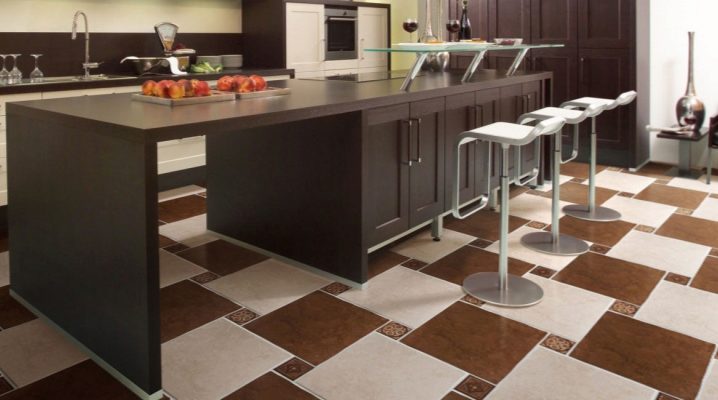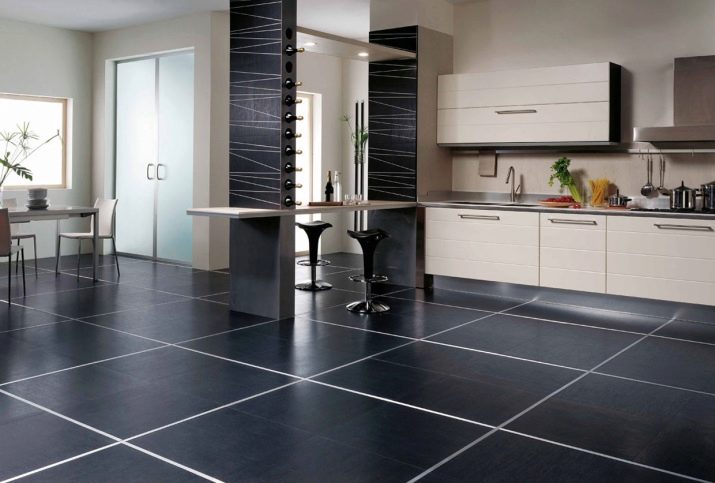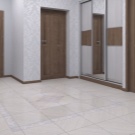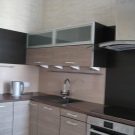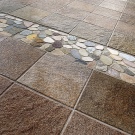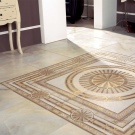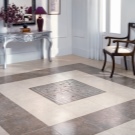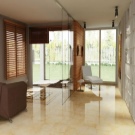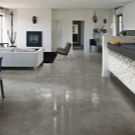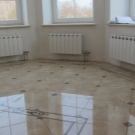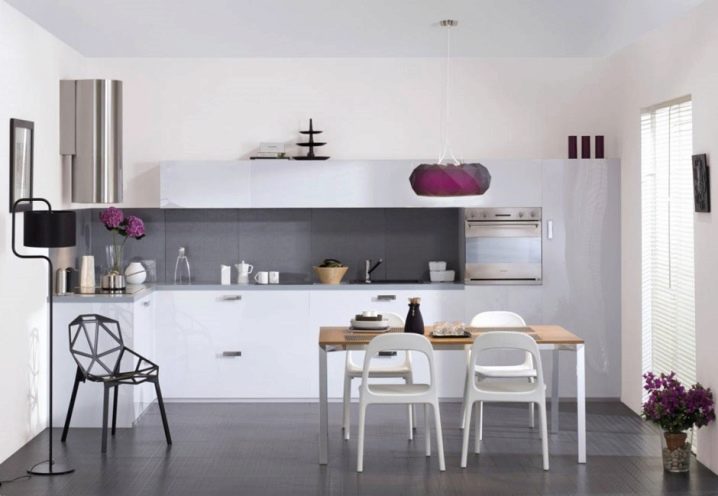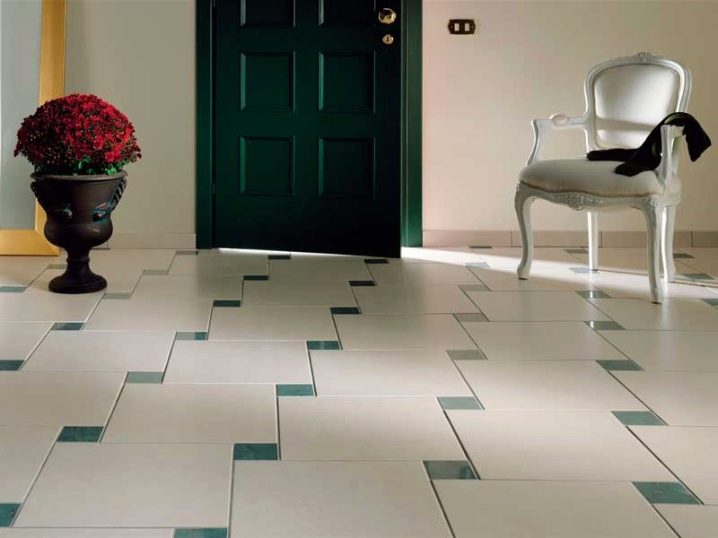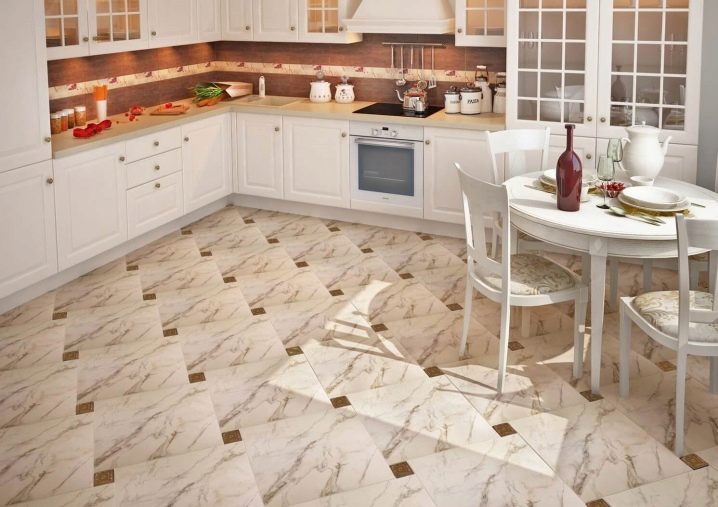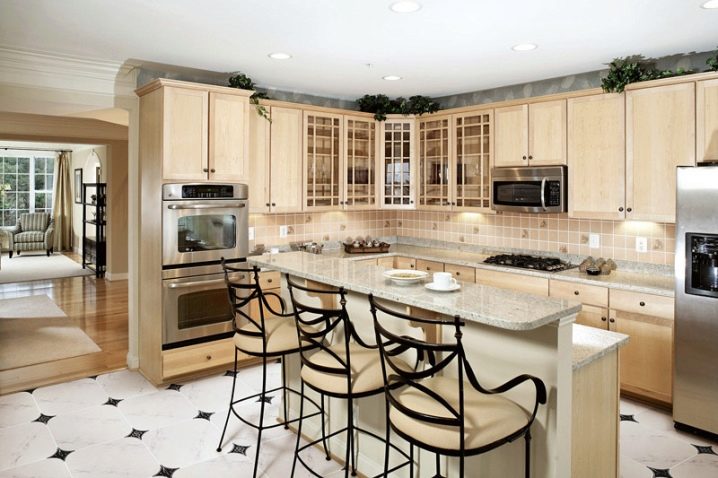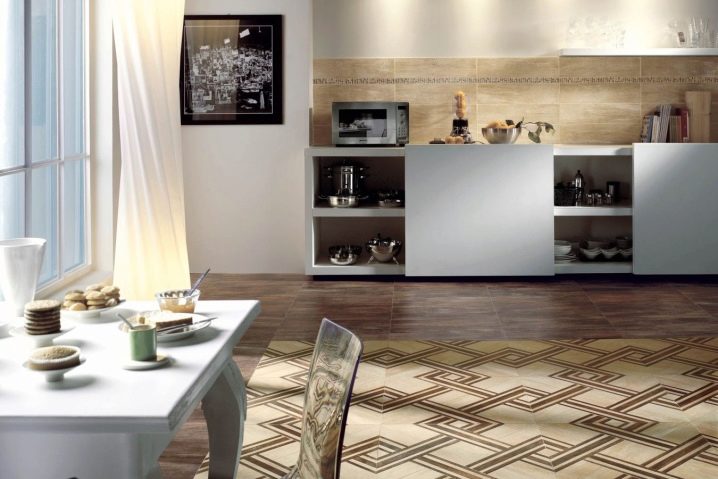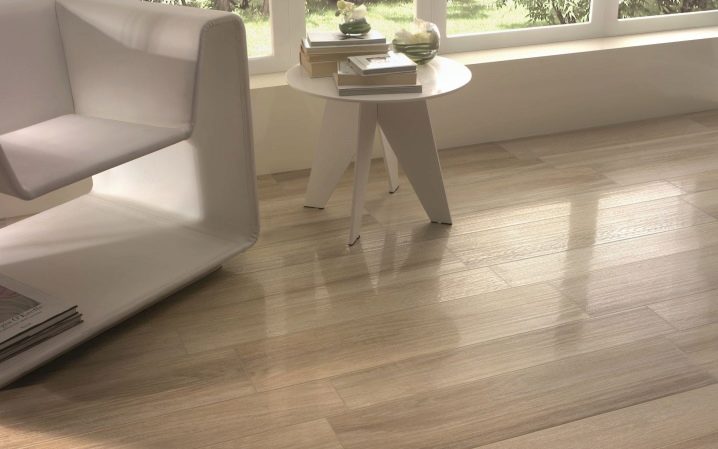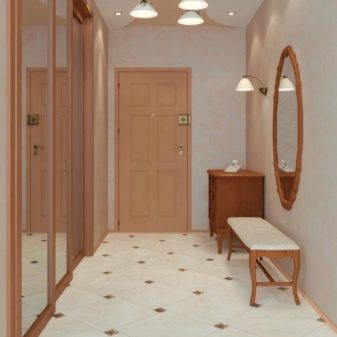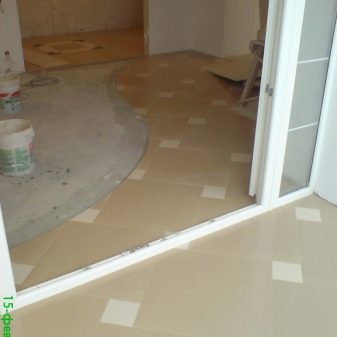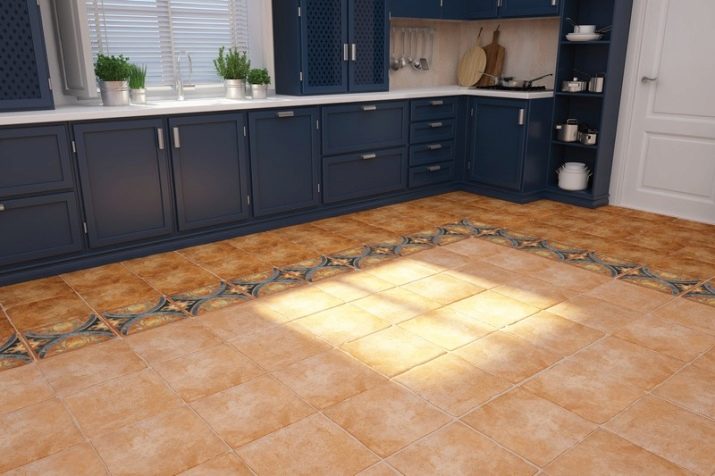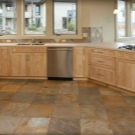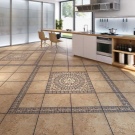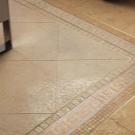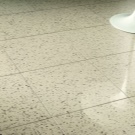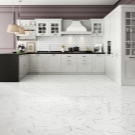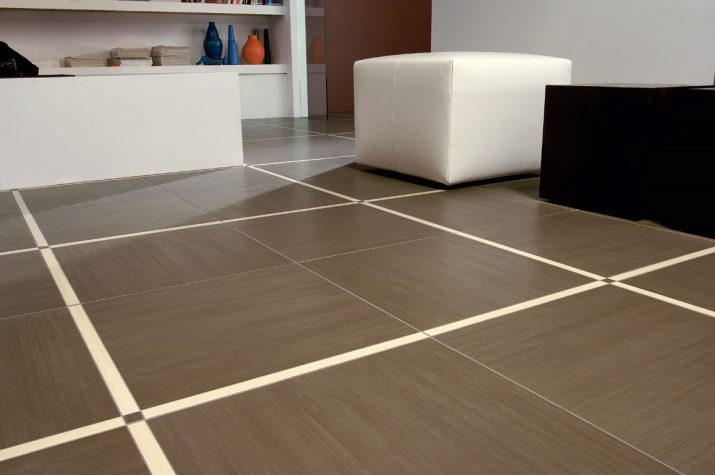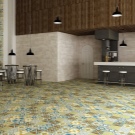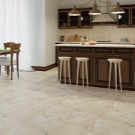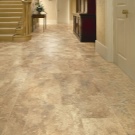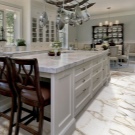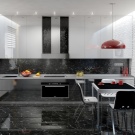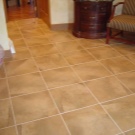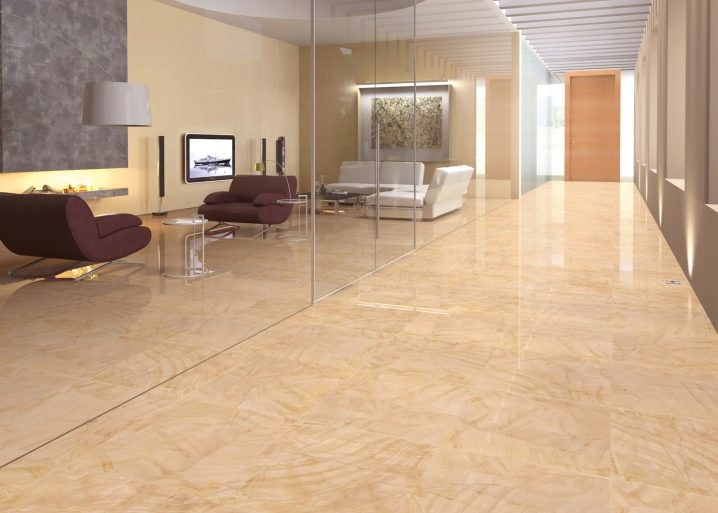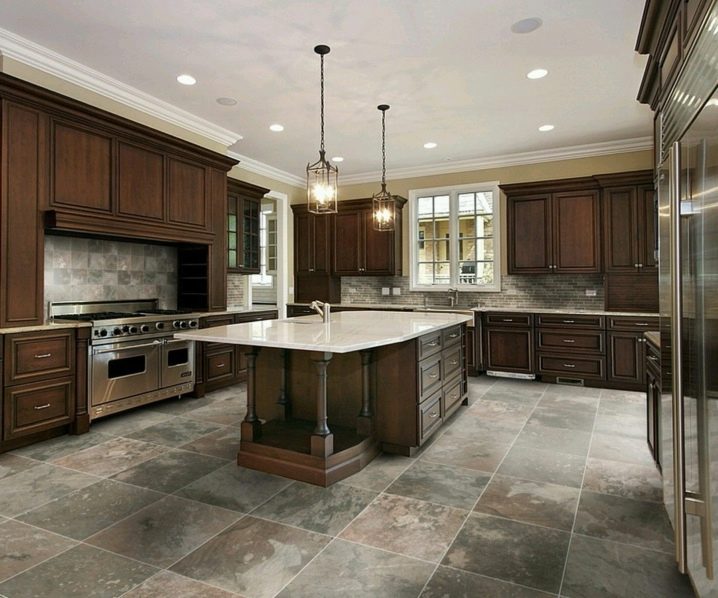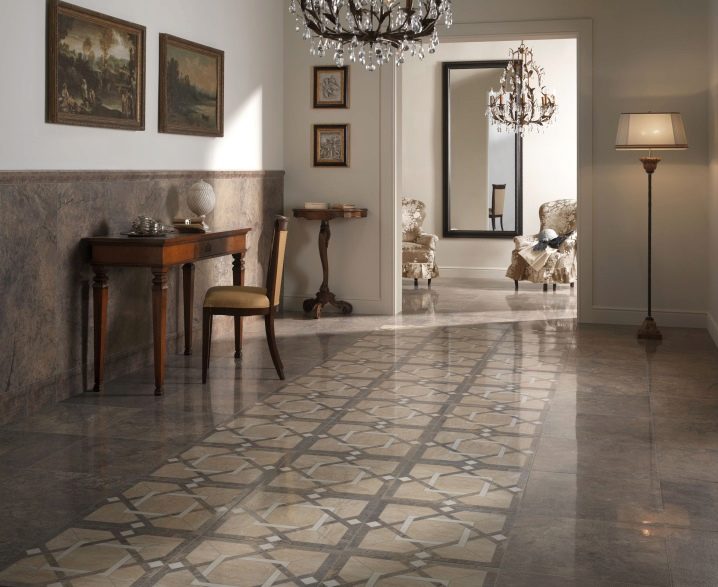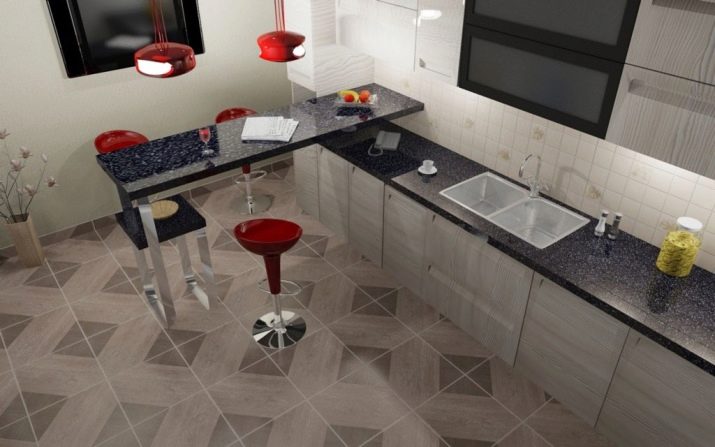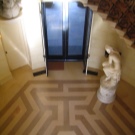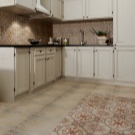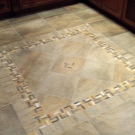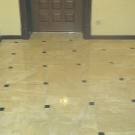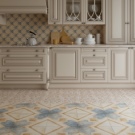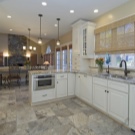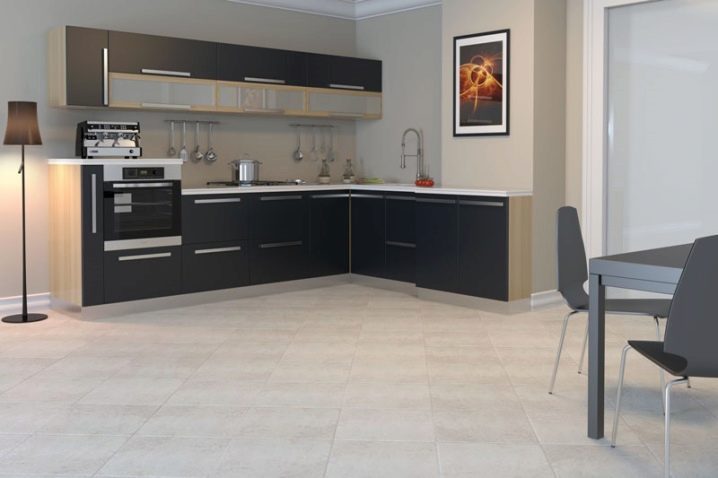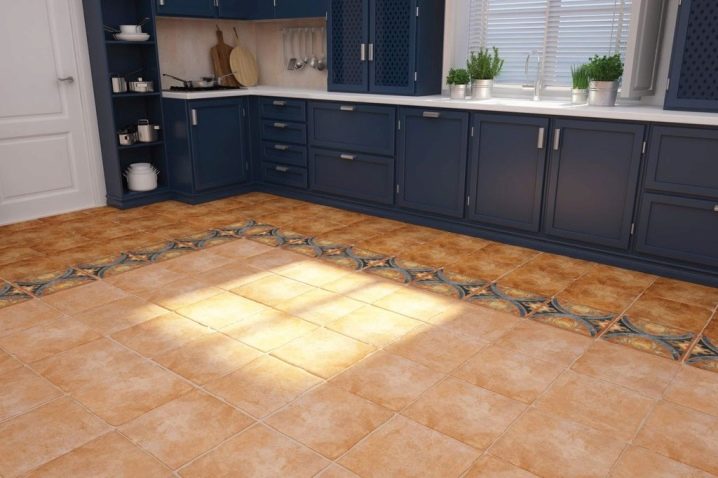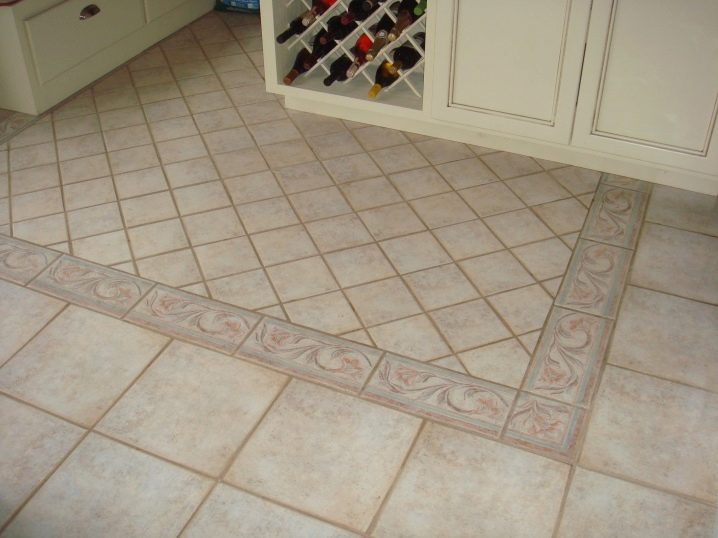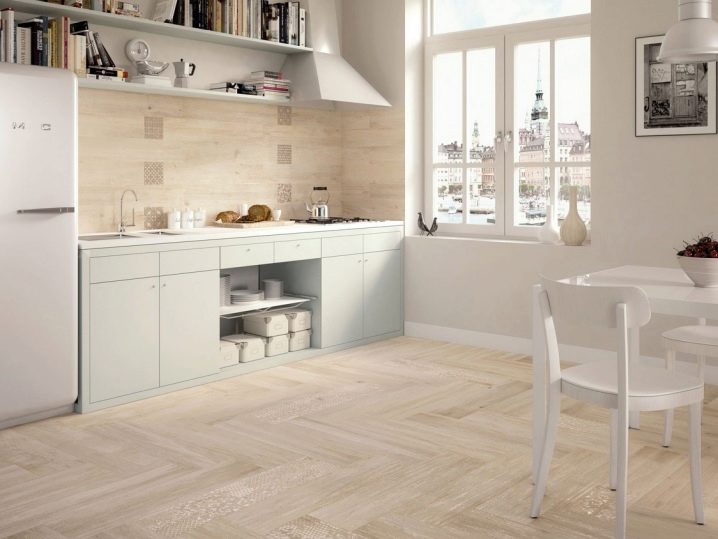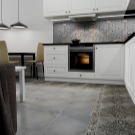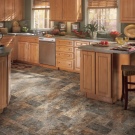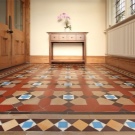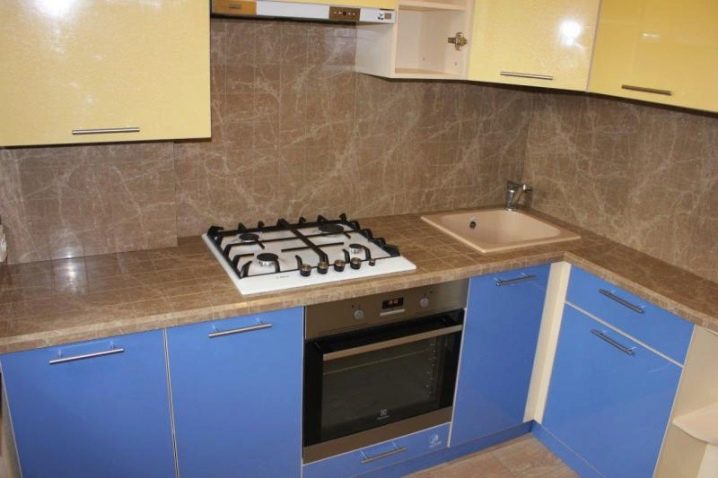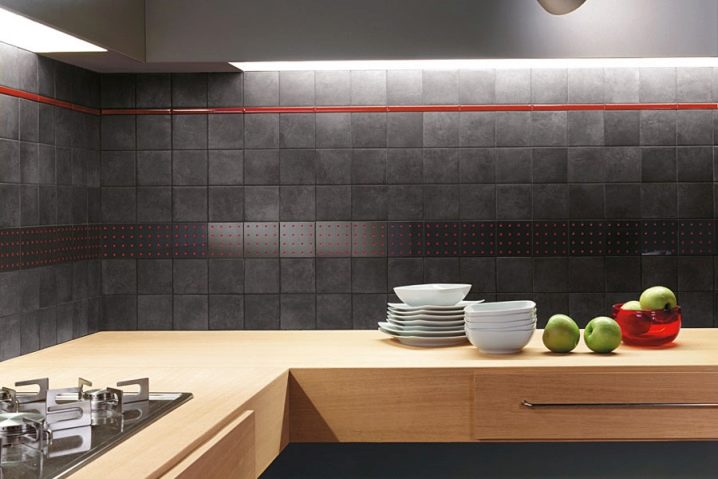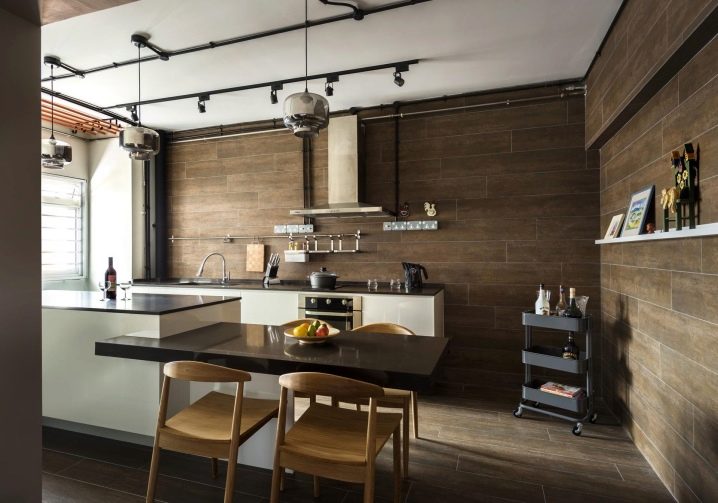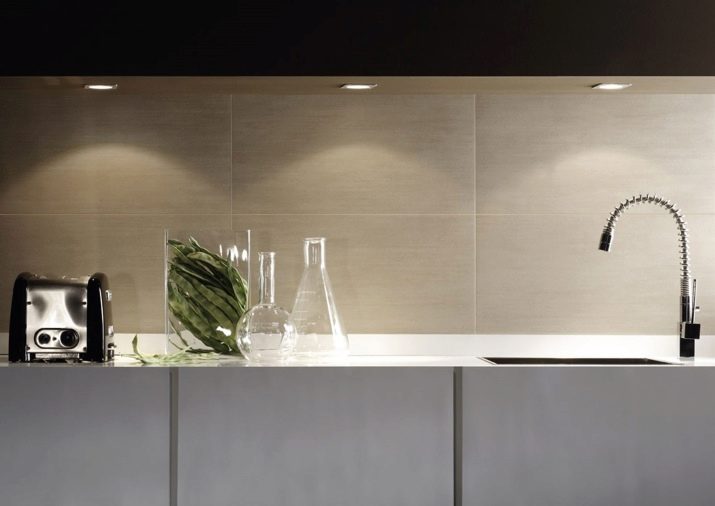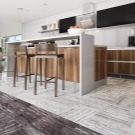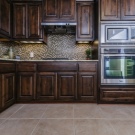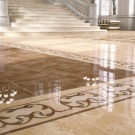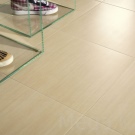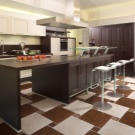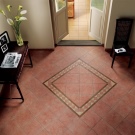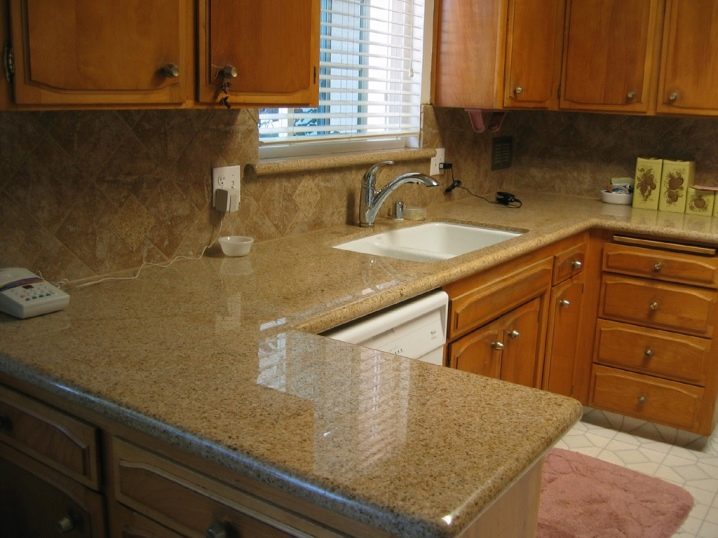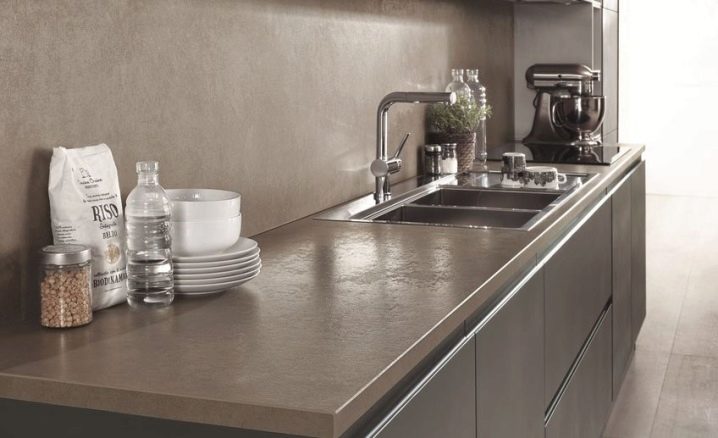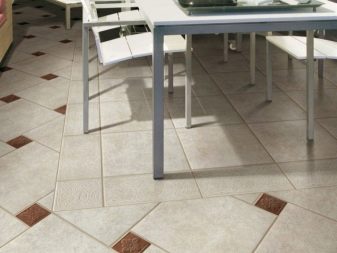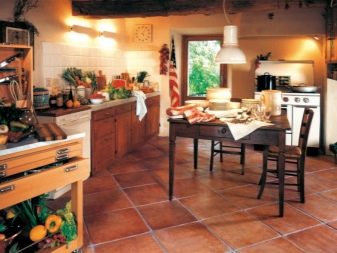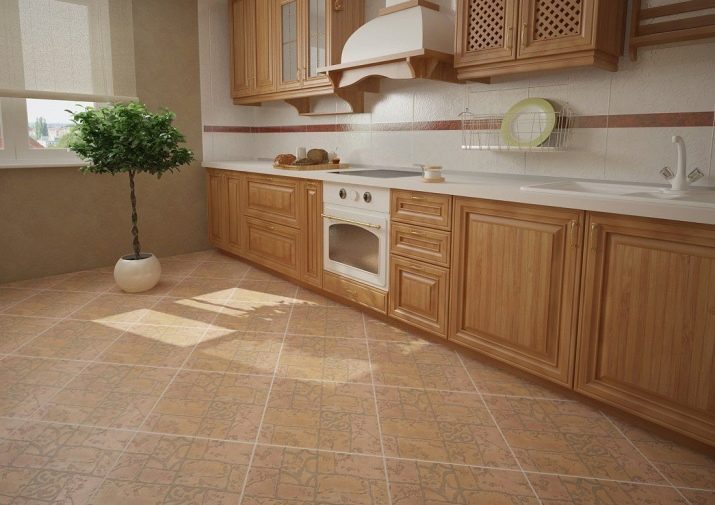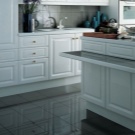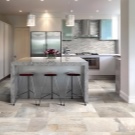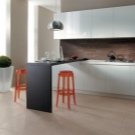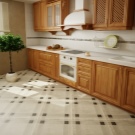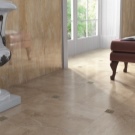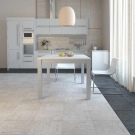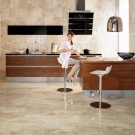Porcelain stoneware for kitchen and corridor
Repair is always a headache and a problem of choice. What style in interior design do you like more, what materials for decoration are preferable, what floor covering to choose for the kitchen? I want it to be beautiful, durable and not wear out for a long time. One of the most common flooring for many years is the porcelain.
The difference of ceramic tiles from porcelain
Porcelain stoneware is the brother of ceramic tiles, but with much greater strength. Italians, in an effort to improve the quality of their favorite ceramic tiles, in the late 70s of the 20th century presented a new material that is not inferior in strength to natural granite.
When the question arises, what is better to choose for such premises as the kitchen and the corridor (ceramic tile or ceramic-granite), you need to understand the properties that distinguish them from each other.
Components in the production of ceramic tiles and porcelain tiles are the same: clay, sand, spar, mineral dyes.Only to create porcelain tiles, the formed tiles are exposed to a press, which is two times heavier than ceramic. The firing temperature of porcelain tiles is 1300 ° C, and the usual tile - 1100 ° C. Due to this, there are differences between these types of cladding material.
After the press and firing, the ceramic tile is covered with an enamel layer and re-fired. This tile is only suitable for walls, because it is less durable and has more pores. Another type of tile, suitable also for the floor, is affected by a press of greater power, which reduces its porosity. They burn tiles covered with enamel only once, and the temperature is much higher. This gives the tile density, reliability, durability.
Ceramic tiles are characterized by:
- durability;
- strength;
- a variety of colors, images and textures;
- stiffness;
- hygiene;
- fire resistance and fire resistance;
- moisture resistance;
- affordable price.
The only disadvantage of tile is that over time it burns out or erases the pattern on it.
The main difference between porcelain tile and tile is thatthat its constituent elements are mixed with mineral dyes at once, which stains all structural layers. And the tile is covered with paint only on top, in the enamel layer.
The positive characteristics of porcelain are also:
- Water resistance is a consequence of its low porosity. The coefficient of water absorption in porcelain is 0.05%, while at the tile - 10%. Therefore, porcelain stoneware floor is not afraid of water.
- Durability. Manufacturers assure that porcelain is able to outlast its owner. The promised lifetime is 100 years.
- Ability to withstand various types of loads. It is difficult to damage it, because the porcelain stoneware can withstand blows of varying strengths (for example, the fall of a cast iron pan), it is resistant to scratches and other damage.
- Affordable cost. Porcelain tile is more expensive than ceramic, but given its durability and other positive qualities, these costs are justified.
- Frost resistance, which makes it possible to use this tile in rooms without heating.
- Ecological purity, because it is made from natural materials.
- High refractoriness.
It has porcelain tiles and some disadvantages:
- The coating is cold, because this material does not conduct heat well. Therefore, the floors in the kitchen will be cool.
- The material is quite fragile, which should be considered during transportation. This also applies to ceramic tiles.
- Porcelain is difficult to cut and handle when laying.
- Great weight.
- Glossy tile is very slippery.
- Connecting seams are difficult to clean.
- The high price of imported porcelain. But the question of price is always relative.
There are various types of porcelain tiles on the surface properties:
- Technical. It has the qualities of natural stone - granite. Such material is the cheapest, but very durable and practical.
- Matt is not processed. This tile does not shine, but it is very hard and moisture resistant. It has the lowest price.
- Polished shines like a mirror. Outwardly it looks very beautiful, but the functional properties are lower, because the polishing procedure changes the structure of the material, it becomes more porous.
- Polished glitters as polished, but the scope is more limited: unsuitable for harsh conditions.
- Satined (polished) has a shiny surface and all the properties of porcelain stoneware intact, because The composition, which gives shine to the tile, is applied before firing.
- Relief stoneware is similar to natural stone with its uneven surface.
- Glazed coated with a special composition (glaze). This allows you to create tiles of different colors and textures. But such a paint layer may fade over time, therefore it is not suitable for places with large crowds of people.
- Structured (textured). In the manufacturing process, porcelain is formed with imitation of different textures. This is a beautiful decorative material with non-slip surface.
How to choose
After weighing all the pros and cons, we decided to put ceramic granite tiles on the floor in the kitchen and hallway. And here new questions appear:
- What amount of material to purchase? It depends on the surface area on which the tile will be laid. The tile size and laying method will influence its number. Experts advise taking tiles with a margin (5-15%).
The tile from porcelain tile has a variable number of the standard sizes: 15x15, 20x20, 30x30, 30x40, 40x60, 60x60 cm.Very popular is the square tile, which has a side from 20 cm to 60. There are other sizes, but they are mainly needed to create a decorative ornament. And the size and color of the tile is chosen for a specific room. On the advice of experts and consumer reviews in a small kitchen, a tile of medium size looks best: 30 by 30 cm. A larger one visually reduces the room. For large rooms there are no such restrictions.
- How to determine whether high-quality porcelain? Consider the reverse side of the tile. It should be neat holes in the form of squares, in which each side should not exceed 20 mm, and the depth - 3 mm. When technical openings are deeper, have uneven edges, this indicates violations in the production cycle.
- What wear resistance should a material have for a kitchen and a corridor? There are 5 porcelain stoneware groups characterizing its wear class: from PEI 1 (for rooms with low attendance) to PEI 5 (for buildings where not only people work, but also appliances). For the floor in the kitchen usually choose class PEI 3.
- What kind of porcelain stoneware preferred for the kitchen floor? Today the market offers a wide range of tiles made from this material. But not everyone is suitable for the kitchen.
According to reviews on construction forums and recommendations of experts, it is clear that the best choice for the kitchen is practical matte ceramic granite. It has all the necessary qualities for this room: it does not slip even wet, very durable and wear-resistant, it washes well by any means. The same applies to technical porcelain stoneware, but its appearance is not very attractive and the number of colors is minimal. Not bad and textured material - and it looks beautiful, and wear resistance is good. A minor difficulty is that it is harder to clean because of the surface texture.
Satined porcelain tile is very beautiful, has good anti-slip properties, but does not withstand heavy loads. Very suitable for decoration, to create elements of the floor pattern.
Do not advise for kitchen and corridor polished or glazed stoneware. It is rather slippery, the glaze erases over time, grains of sand and other debris can leave scratches on it.
Variants and combinations of design
When choosing a ceramic granite tile, you should pay attention to its technical properties, and the features of the room.Designer tips will help not only visually change the kitchen settings, but also to embellish it, create a dream interior. Here are some of them:
- To make the ceilings higher and the kitchen wider, you should choose the original method of laying porcelain stoneware.
- For a large kitchen, a tile of dark color is suitable, and for a small one - light.
- Ceramic granite tile is laid instead of baseboard.
Floor
Porcelain stoneware as a floor covering is the right choice, because it looks great and lasts a long time.
Today, the market offers a large assortment of porcelain tiles, and not just one-color, but imitating such natural materials as stone, leather, marble. Possible stylization of wood or parquet. This tile will definitely help to give the kitchen a personality.
Regarding the color solution of ceramic granite tiles, not only for the kitchen and the corridor, but also for other rooms, the fantasy of manufacturers is inexhaustible. Today there is a choice of colors and tiles, and its texture. In accordance with the basic design idea and financial capabilities, it is proposed to choose tiles of the following colors:
- Salt pepper. It is a monochromatic tile with specks of dark and light shades.The color scheme is very diverse, the price is the most democratic.
- Monocolor. A tile that has only one color. Can be either matte or polished. For laying on the floor, color combinations are possible, creating different geometric patterns.
- Color of natural stones (granite, marble). A tile that imitates the coloring of natural stone with their winding patterns.
- Textured porcelain tile is a tile with complex images: under a tree, leather, stone, or just an abstraction.
Laying porcelain tile on the floor can be a variety of ways, in addition to the standard: herringbone, diamond, diagonal, razbezhku, ladder and intricate patterns, which will tell the designer's imagination.
Apron
Everyone knows that the apron in the kitchen is called part of the wall from the worktop to the wall cabinets. Traditionally, it was tiled. But lately, porcelain stoneware is increasingly being used to coat the apron in the kitchen.
This is due to such qualities of porcelain stoneware as water resistance, wear resistance, resistance to various damages and the effects of chemicals. Porcelain tile is ideal for rectification, which allows you to veneer the wall with virtually no seams, creating the appearance of a monolithic slab.And this is not just beauty, but also practical, because taking care of such an apron will not be difficult.
If you want to design a kitchen in a classic or, on the contrary, modern style, an apron made of ceramic granite, imitating the intricate patterns of natural marble or wood, will fit perfectly into the interior.
Modern porcelain stoneware is represented by a wide range of types of tiles, so you can find material suitable for a kitchen apron both in size and thickness, in color, and in texture. Of course, porcelain tile is heavier than tile, but if you entrust laying to the master and choose the right glue, an apron made of this material will be pleasing to the eye and decorate the kitchen for a very long time.
Table top
Modern design ideas are also embodied in the veneering of porcelain stoneware even on the working countertop in the kitchen.
Such a countertop is not afraid of scratches, cracks, chips. It will not appear dents or cuts. A porcelain stoneware tabletop will not absorb water, and fat, dyes and other pests of kitchen furniture will easily disappear after cleaning. A tabletop lined with porcelain stoneware endures heat drops.
Piling
Porcelain tiles can be laid only on a completely flat base, cleaned from dust. Before you begin work on laying tiles on the floor, you need to make a markup and find the middle of the kitchen. This will help thread or cord, which stretch from one corner of the room to another diagonally. In order to achieve symmetry, the installation of porcelain stoneware must start from the middle of the thread.
All open areas of the kitchen must be faced with whole tiles. The cut tiles are laid in places where they will not be visible.
For the installation of tiles using a special glue. It should be well stirred, no lumps, thick. After applying the adhesive and removing excess tile, it is immediately laid on the floor. To the distance between the tiles was the same, use special plastic crosses. After laying the stitches get rid of excess glue. A day later, grouting is done.
The kitchen is the warmest place in the house. Equip it to your taste.
